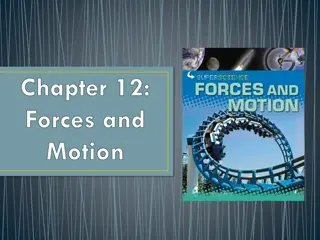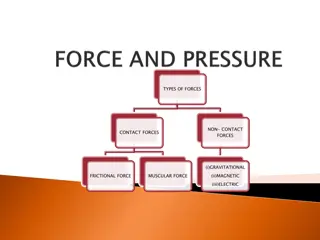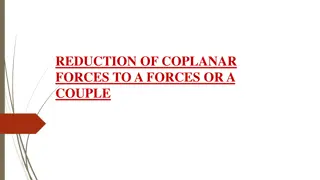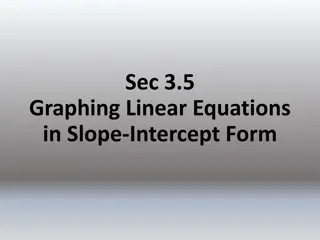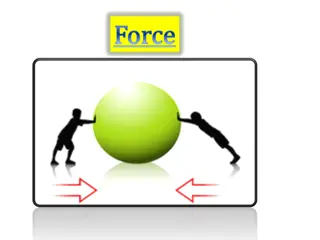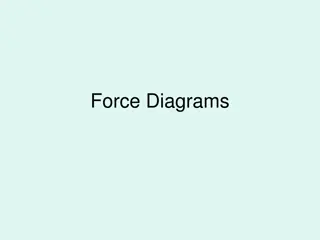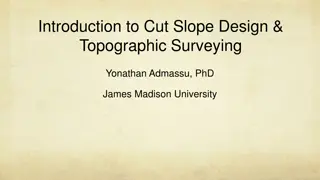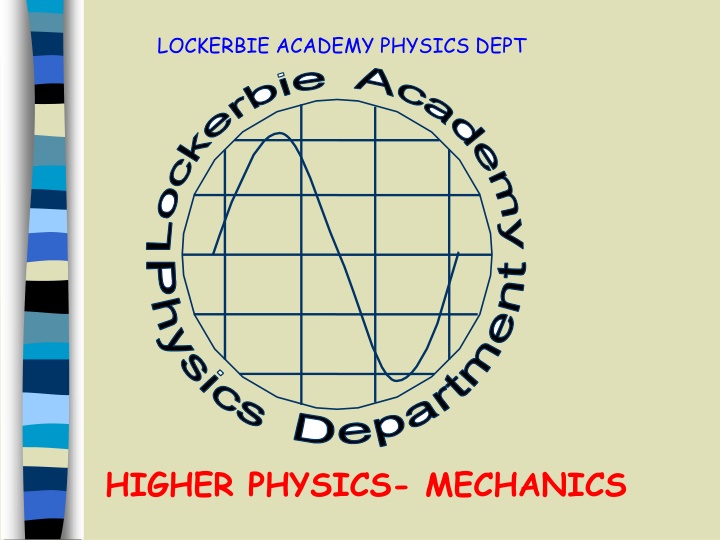
Higher Physics Mechanics at Lockerbie Academy
Dive into the world of higher physics mechanics at Lockerbie Academy as we explore forces, components of vector quantities, motion on inclined planes, and the role of friction in opposing motion. Learn how to separate forces into components acting down the slope and at right angles to the slope for better understanding and calculations.
Download Presentation

Please find below an Image/Link to download the presentation.
The content on the website is provided AS IS for your information and personal use only. It may not be sold, licensed, or shared on other websites without obtaining consent from the author. If you encounter any issues during the download, it is possible that the publisher has removed the file from their server.
You are allowed to download the files provided on this website for personal or commercial use, subject to the condition that they are used lawfully. All files are the property of their respective owners.
The content on the website is provided AS IS for your information and personal use only. It may not be sold, licensed, or shared on other websites without obtaining consent from the author.
E N D
Presentation Transcript
LOCKERBIE ACADEMY PHYSICS DEPT HIGHER PHYSICS- MECHANICS
LOCKERBIE ACADEMY PHYSICS DEPT. HIGHER PHYSICS MECHANICS UNIT D383 Forces down a slope
LOCKERBIE ACADEMY PHYSICS DEPT. HIGHER PHYSICS MECHANICS UNIT D383 We can take COMPONENTS of any vector quantity to help us with our calculations Usually these are horizontal and vertical or N/S and E/W FV = F sin = Fh = F cos
LOCKERBIE ACADEMY PHYSICS DEPT. HIGHER PHYSICS MECHANICS UNIT D383 When objects are on an inclined plane (a slope!) we do not always want to separate the force into horizontal and vertical components but we want to separate then into components acting down the slope and at right angles to the slope.
LOCKERBIE ACADEMY PHYSICS DEPT. HIGHER PHYSICS MECHANICS UNIT D383 We want to separate then into components acting down the slope and at right angles to the slope. down the slope into the slope Weight Fw mg
LOCKERBIE ACADEMY PHYSICS DEPT. HIGHER PHYSICS MECHANICS UNIT D383 90- 90 90 Weight Fw mg
LOCKERBIE ACADEMY PHYSICS DEPT. HIGHER PHYSICS MECHANICS UNIT D383 So the important component that gives the block the motion down the slope is mg sin mg sin Weight Fw =mg
LOCKERBIE ACADEMY PHYSICS DEPT. HIGHER PHYSICS MECHANICS UNIT D383 The component mg cos pushes into the slope. This force is balanced by an equal but opposite force from the slope. mg cos mg sin mg cos mg cos Weight Fw mg
LOCKERBIE ACADEMY PHYSICS DEPT. HIGHER PHYSICS MECHANICS UNIT D383 Friction Friction always acts to oppose motion. If the object is sliding down the slope then friction must act up the slope, but if the object is being pushed up the slope then friction acts down the slope. mg cos mg sin mg cos Weight Fw mg
LOCKERBIE ACADEMY PHYSICS DEPT. HIGHER PHYSICS MECHANICS UNIT D383 Friction always acts to oppose motion. If the object is sliding down the slope then friction must act up the slope, but if the object is being pushed up the slope then friction acts down the slope. mg cos mg sin mg cos Friction Weight Fw mg
LOCKERBIE ACADEMY PHYSICS DEPT. HIGHER PHYSICS MECHANICS UNIT D383 Notice as the slope gets steeper the component of weight down the slope increases, so there is more chance of the object moving! Both blocks have the same weight (same length blue weight line) mg sin mg sin mg cos mg cos
LOCKERBIE ACADEMY PHYSICS DEPT. HIGHER PHYSICS MECHANICS UNIT D383 A mistake that can often occur is that students think that mg or weight is the vertical component and draw the diagram as below. mg The problem with this is that the component of the weight down the slope would be greater than the weight. This is not possible, so BEWARE.
LOCKERBIE ACADEMY PHYSICS DEPT. HIGHER PHYSICS MECHANICS UNIT D383 The object will accelerate if there is an unbalanced force on an object. This comes from the resultant of all the forces. In most of the cases the acceleration is equal to the component of weight down the slope less the friction which slows the object down. Try the example! 121N 54o 200N
LOCKERBIE ACADEMY PHYSICS DEPT. HIGHER PHYSICS MECHANICS UNIT D383 121N 54o 200N a) What is the mass of the block shown? b) What is the resultant force on the block? c) What is the acceleration of the block shown?
LOCKERBIE ACADEMY PHYSICS DEPT. HIGHER PHYSICS MECHANICS UNIT D383 121N 54o 200N a) What is the mass of the block shown? = = mg Fw = 8 . 9 200 m b) What is the resultant force on the block? F w = down the component sin = slope sin F F F un w Notice Fwcos is balanced from a reaction force from the slope c) What is the acceleration of the block shown? 2 = = ms ma Fun 2
Summary For an object moving down the slope mg cos reaction force Friction mg sin mg cos Weight Fw mg
Summary mg cos reaction force mg sin mg cos Friction Weight Fw mg
Now using LA Physics Course complete NEWTON S SECOND LAW / TUTORIAL 2 questions 12 & 13 and then VECTORS TUTORIAL (all questions)

